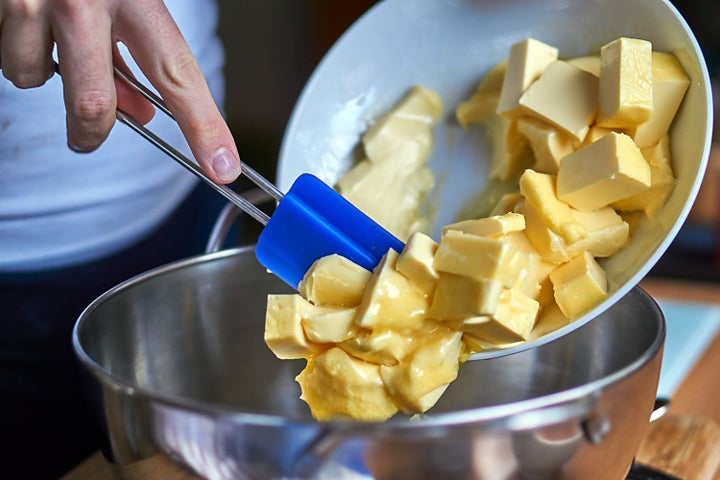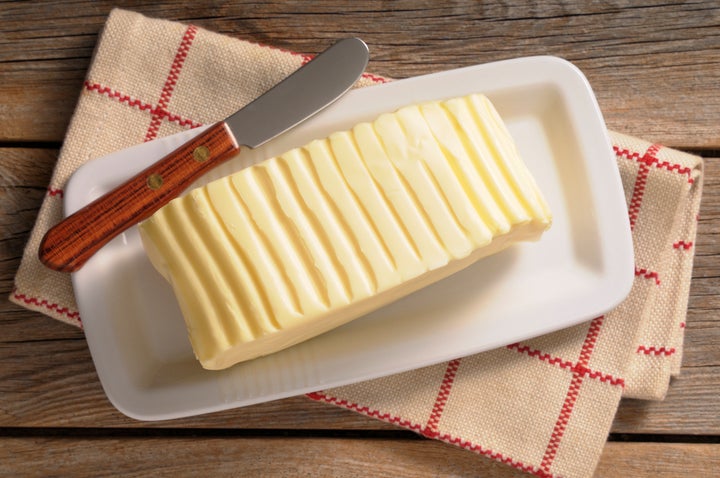
Butter is a contentious subject among bakers. Some swear by European varieties, extra churned for a higher fat content that yields a softer texture and more concentrated, fermented flavor. Others use only American-style brands with a lower fat content, a more neutral flavor and better control over consistency in baking. There’s also the salted vs. unsalted question and so much more.
Pastry chefs and bakers across the nation answered these questions and more as they demystified this cornerstone of baking and shared some of their favorite treats to make with the golden superstar.
The benefits of baking with European-style butter
“European butters improve the quality and consistency of your baked goods,” said chef Adam Finzel, the sous chef at Willa’s in Tampa, Florida. “It’s especially good for baking bread and really any kind of dough. The higher fat content adds tenderness and structure because butter doesn’t evaporate like water does when baked. It’s the only butter I use at work and at home.”
Kara Enache, the pastry chef at Florida’s Black Bear Bread Co., also prefers it: “It is more pliable and easier to work with, and European-style butter also creates a much bolder flavor without having to use copious amounts. I use it in almost everything in the bakery, but specifically in the lamination process. We use it for croissants, for danish and anything that has lots of layers built into it. I love making cheese danishes with European butter ― you have cream cheese in the filling and the dough is so soft, has so many layers. They’re my favorite.”
Enache uses it in her pie dough as well, but with a twist. “If you’re at home and, like me, you struggle with getting great layers like my grandmother and my mom would make, fold it several times,” Enache said. “You automatically work more layers into your dough and then you have a great crust ― it’s the process of making croissants, but in pie dough.”
The benefits of baking with American-style butter
Hilary Lamont, pastry chef at North Carolina’s Asheville Proper, has opinions. “For baking, my go-to butter is American-style. It offers wide availability, fat and flavor. The higher fat content of European style butter is also tasty, but I find it best enjoyed simply spread on some toasted bread,” Lamont said.
Over in Highlands, North Carolina, Oak Steakhouse executive pastry chef Anne White has a similar take. “American-style fits the broad spectrum of most recipes, whereas if you try to use European-style butter in your existing recipes that just call for “butter,” it may not turn out right since the fat content is different,” White said. “I love baking brown butter chocolate chip cookies with regular unsalted butter. They have so much more dimension and warmth that is worth the extra step of browning butter!”
What about vegan butter for baking?
Plant-based baking needs fats as well. Lauren Ocello, a French-trained pastry chef and “head vegan” at Twidley Bits in Chicago, always turns to Earth Balance unsalted buttery sticks. “I do my measurements by weight because that’s how I was trained and cutting from sticks is so much easier,” Ocello said. “I do a little math whenever I buy vegan butter. I’ll look to see what their serving size is and the grams of fat per serving. If it is a 14 grams serving size, I want about 11 of those grams to just be fat, so that you’re at least above a 75% ratio of fat to other items like water.”
Biscuits hit Ocello’s sweet spot. “They take you from breakfast all the way to dessert. A lot of times people will cut their butter content with some vegetable shortening for biscuits to make a nice, different level of flakiness. Vegetable shortening is already vegan, so it’s a really nice substitute to give that same bake you’re used to with a conventional biscuit, but less animal product involved.”
Here’s when it’s better to use oil instead of butter
Growing up, my great-grandmother taught me to use oil in certain cakes, like her warm spice cake with apple caramel drizzle. And she’s not alone. Enache likes oil in muffin batters because “it creates a lighter texture and it doesn’t dry out as quickly.”
Ocello goes for oil in cakes too: “Oil for a cake gives you a far more tender crumb because it’s 100% fat. So if you’ve got your 14 grams of oil, it is 14 grams of fat. There’s no water in there for evaporation. There’s no extra solids like with butter.”
Husk Nashville pastry chef Rachel Rathgeb added: “Oil acts much differently in recipes than butter because it is a liquid at room temperature vs. a solid. It can create a denser, richer product which can be ideal in things like fudgy brownies or some cakes. Oil also has a much more neutral flavor, which can let other tastes in the recipe shine.”

Salted vs. unsalted butter
Everybody I talked with came down squarely on the side of unsalted butter. “Baking is a more precise form of food prep than, say, savory cooking,” Ocello explained. “I can control the salt content and it won’t mess up my leavening agents ― with baking soda and baking powder, salt affects how your product will rise.”
Lamont added, “I use unsalted for consistency ― different brands of salted butter will vary in the amount of salt they add. I love buttery shortbread made with unsalted butter. I’ve been a fan ever since I tried some Scottish shortbread. It’s all about the butter and the slightly sweet and rich, buttery flavor is so simple, yet so perfect to me.”
The temperature of your butter can be even more important than the type
Different recipes call for different temperatures ― melted, room temperature, ice-cold cubes, etc. What’s a baker to do when they forget to pull the sticks out hours before?
“Baking fails are often a result of wrong butter temperature,” White said. “You want it very cold when making pie doughs or biscuits so that you have small butter pockets in your dough that melt in the oven and create the flakiness. If your butter is too warm and starts to melt into the dough, it will create a denser product. When making cookies or cakes with butter, you almost always want it to be room temperature and pliable so that you can achieve the correct creaming method when beating the sugar and butter together. If it’s too cold when mixing, you likely will make cookies that are dense.”
Jessica Morrison, founder of The Baking Notification Project, has some advice gleaned from the book “A Good Bake” by Melissa Weller, a chemical engineer turned James Beard-nominated baker. “Weller says you only need 15 to 20 minutes to soften butter. Previously I would freak out if I had forgotten to put my butter out, or I would do the thing where I put it in the microwave and make butter soup. Weller’s book changed my approach. I like this idea that it only takes 15 to 20 minutes. I’ll set my butter on the counter and start a timer for 20 minutes. Works every time.”